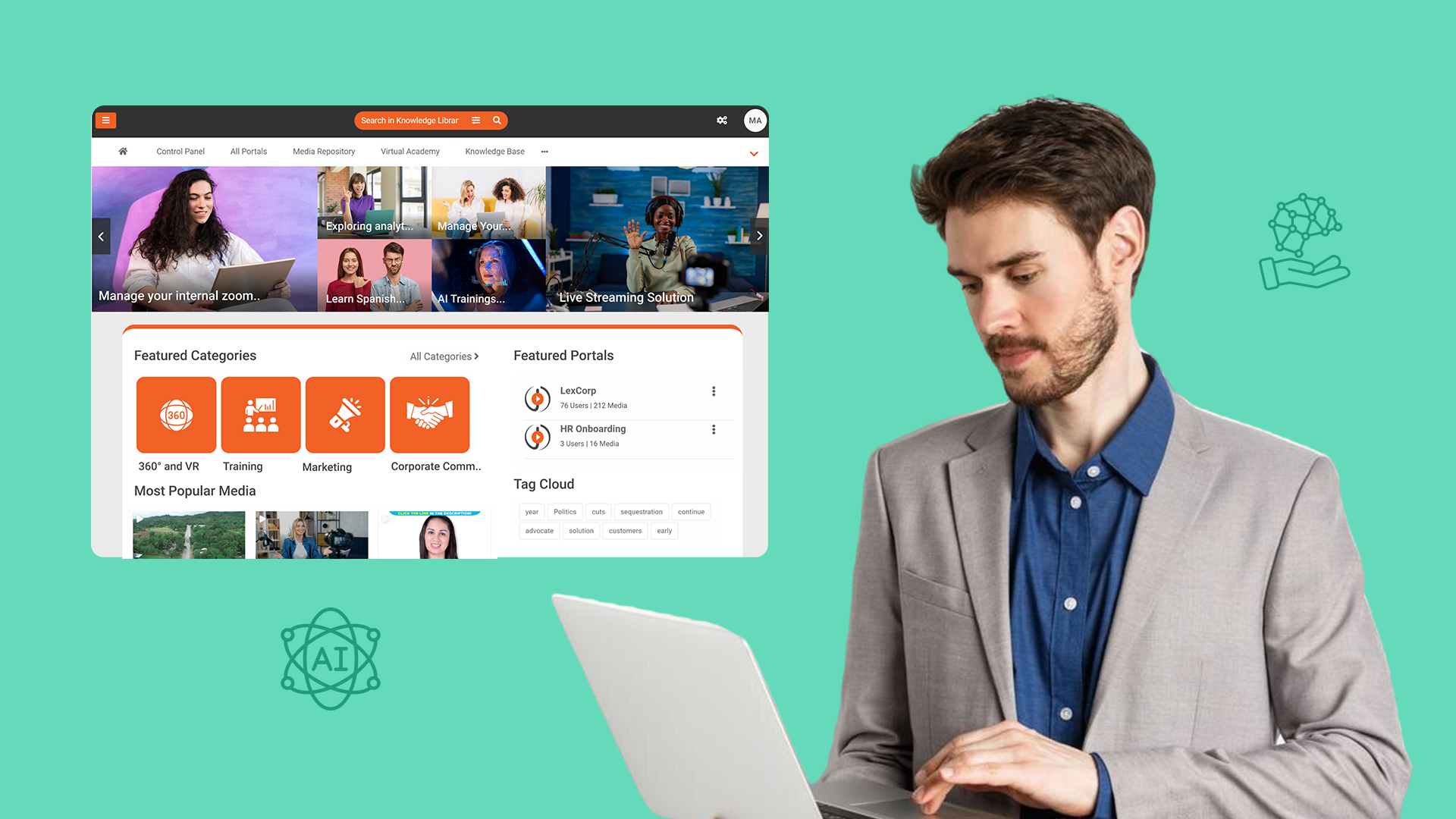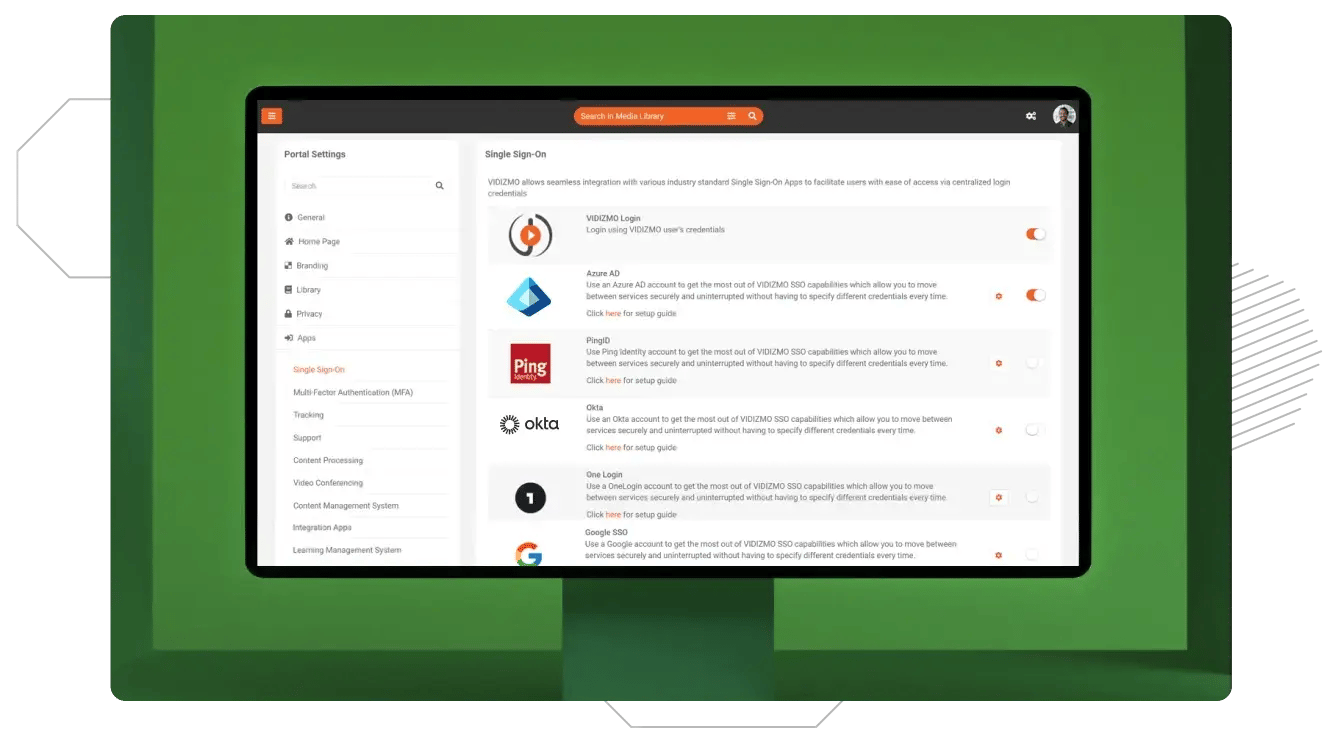7 Key Reasons Why Enterprises Need AI-Powered Video Content Management
by Daniyal Hassan, Last updated: June 23, 2025

Managing enterprise video content is becoming increasingly complex, from ensuring compliance with regulations to securing sensitive data. This blog explores how AI-powered video content management systems (VCMS) streamline workflows, automate compliance, and enhance searchability, helping businesses manage and scale video content efficiently.
Let’s get real. Managing video content across an enterprise isn’t just overwhelming—it’s downright painful.
Video files are large, difficult to organize, and nearly impossible to sift through manually without running into errors. When you need to find specific content, you either waste hours searching or fail to locate it altogether.
On top of that, organizations must ensure compliance with regulations like GDPR and HIPAA while securing sensitive data, adding another layer of complexity. Mishandling video content can lead to hefty fines, legal consequences, and reputational damage—especially for businesses that deal with large video libraries.
Video is an indispensable tool for communication, training, and compliance, but managing and securing it manually is no longer feasible. Without an intelligent solution in place, organizations risk productivity losses, collaboration inefficiencies, and security vulnerabilities.
The Growing Need for AI in Video Content Management
That’s where AI-powered video content management systems (VCMS) come in. But here’s the catch—not all AI is created equal. Choosing the wrong solution can result in non-compliance fines, security risks, and operational inefficiencies.
For instance, a compliance officer may face an urgent data subject access request (DSAR) and need to locate, review, and redact sensitive information within hours—not weeks. Meanwhile, an IT department might struggle to retrieve a critical training video buried deep in a chaotic file system.
These aren’t just theoretical issues—they’re real challenges enterprises face every day. And as video content volumes grow, these problems will only intensify, making it harder to stay compliant, secure data, and locate essential content when needed.
Finding the Answer to the Problem
So, how do you future-proof your enterprise video content management? The answer lies in AI. To ensure that your enterprise's video content management strategy remains effective and efficient in the long run, it's essential to embrace AI-powered solutions.
AI can automate most of the time-consuming, error-prone, and tedious tasks, ensure compliance, enhance security, and streamline workflows if you choose the right capabilities. Here are the top AI-powered features you need to look for when evaluating an enterprise video content management platform:
Automated Video Indexing and Searchability

One of the most significant challenges in managing large video libraries is the ability to quickly and efficiently find specific content. When it comes to video content, the ability to search by keywords or timestamps can be helpful. AI-powered video indexing allows you to automatically categorize and tag video files, making it easy to find specific clips within massive libraries. Whether it’s auto-captioning for accessibility or indexing based on spoken words, AI ensures that no video is ever lost in the shuffle.
For IT directors, this means operational efficiency. For training managers, it means easily accessible content for onboarding or compliance training. And for CIOs, it’s about strategic scalability, automating what was once a manual process. Similarly, researchers can use AI to search for video content related to specific topics or events, enabling them to conduct more in-depth studies and analyses.
AI-powered Transcription and Subtitling
Imagine trying to transcribe hours of video content manually. Not only is it time-consuming, but it’s prone to human error. It requires significant concentration and effort. Even the most skilled transcribers can make errors, such as mishearings, typos, or omissions. AI transcription tools eliminate this pain point by automatically generating accurate transcripts and subtitles.
Training managers will particularly benefit from this, as it makes training videos more accessible to employees and helps them meet compliance requirements for accessibility, like the Americans with Disabilities (ADA) standards. It also simplifies reviewing content for IT departments and compliance officers who need to document training or review internal communication for adherence to company policies and regulations.

Smart Redaction for Compliance
Compliance is a massive pain point for organizations that handle video content for internal purposes, customer interactions, or public dissemination. They are subject to a complex web of regulations and compliance requirements, especially GDPR, HIPAA, and FOIA, breathing down your neck. One of the most time-consuming and error-prone tasks is manually redacting personally identifiable information (PII) and other sensitive data within video recordings.
AI-powered video redaction tools offer a more efficient and accurate solution to this challenge. They can automatically detect and blur faces, license plates, or any personally identifiable information (PII) in video footage, significantly reducing the manual effort required.
This is a godsend for compliance officers, automating an otherwise tedious and error-prone process. IT directors and CIOs can rest easy knowing their company is less vulnerable to regulatory penalties and lawsuits. This way, they can demonstrate to regulations that their organization is taking data privacy seriously, enhancing the company's overall reputation and maintaining customers' trust.
Video Summarization and Chaptering
AI video summarization is a powerful tool that can significantly reduce the time it takes to consume lengthy videos. With attention spans getting shorter and shorter, people are increasingly demanding efficient and effective ways to consume video content.
AI algorithms can generate concise summaries that capture the essence of the original video by analyzing the content, identifying key scenes, and extracting relevant information. This allows viewers to quickly understand a video's main points without watching the entire content.
In addition to summarization, AI can also automatically chapter videos. By analyzing the video's structure, identifying natural breaks in the content, and assigning relevant titles, AI algorithms can create a table of contents that allows viewers to easily navigate and find specific sections of interest. This is particularly useful for long videos with multiple topics or subtopics.
Automated Metadata Generation
Metadata, or data about data, is critical in managing video content at scale. This is especially true for industries like healthcare and law enforcement, where video evidence or records need to be carefully tracked. AI can automatically generate metadata like timestamps, speaker identification, and object recognition, allowing for more detailed search and review capabilities.
This feature offers unparalleled efficiency and accuracy for IT departments and compliance officers. Instead of manually logging metadata, AI does it in real-time, saving hours of work and minimizing the risk of human error.
Advanced Analytics for Insights and Reporting
AI doesn’t just automate, it also analyzes. Advanced AI capabilities allow you to generate insights from your video content, identifying patterns, trends, and even user behavior. This is particularly useful for training departments that want to measure the effectiveness of their content or IT departments looking to optimize system performance.
AI-powered analytics offer data-driven insights that can help improve decision-making and strategic planning. Whether it's analyzing training completion rates or identifying content gaps, AI turns video content from a static asset into a dynamic tool for growth.
Scalability and Integration with Existing Systems

Finally, any AI-powered video content management solution must be scalable and easily integrated into your existing tech ecosystem. AI should work seamlessly with your current tools, whether it’s your learning management system (LMS), customer relationship management (CRM) software, or compliance tools, without requiring massive overhauls.
This avoids disruptions, enables smooth workflows, and ensures CIOs and IT Directors' tech stack remains future-proof, with AI helping them scale as their business grows.
Why AI-Powered Video Content Management Features Are Essential for Enterprises
As organizations generate and store increasing volumes of video content, traditional management methods fall short in efficiency, security, and compliance. AI-powered video content management systems (VCMS) provide essential features—such as automated transcription, intelligent search, smart redaction, and advanced security—to streamline workflows, enhance accessibility, and safeguard sensitive information.
Without these AI-driven capabilities, businesses risk regulatory non-compliance, inefficient video retrieval, and security vulnerabilities. Leveraging AI ensures that video content remains organized, searchable, and secure, enabling enterprises to scale their video strategies seamlessly.
Optimizing Video Content Management with AI
Managing enterprise video content is no longer a manual process—AI-powered video content management systems (VCMS) are transforming the way organizations handle large video libraries, ensuring compliance, security, and efficiency. From automated transcription and metadata generation to intelligent search and AI-driven redaction, modern solutions streamline workflows and reduce operational bottlenecks.
Adopting an AI-powered VCMS ensures that businesses can automate tedious tasks, enhance video discoverability, and scale video content seamlessly. Investing in the right enterprise video content management system today will future-proof your organization, improving productivity and compliance.
Ready to transform your video content strategy? Explore our AI-powered VCMS or start your Free Trial today!
People Also Ask
What is an AI-powered video content management system (VCMS)?
An AI-powered video content management system (VCMS) is a platform that uses artificial intelligence to automate the organization, storage, and retrieval of video content. It enhances searchability, streamlines compliance workflows, and improves security by using AI-driven transcription, tagging, and redaction features.
How does AI improve video content searchability?
AI enhances video searchability by automatically generating metadata, transcriptions, and tags. It can identify spoken words, objects, and topics within videos, enabling users to search for specific moments or keywords instead of manually scanning through hours of content.
Why is AI-driven redaction important for compliance?
AI-powered video redaction automatically detects and blurs sensitive information such as faces, license plates, and personally identifiable information (PII). This helps organizations comply with GDPR, HIPAA, and FOIA regulations while reducing the risk of data breaches.
Can AI help make enterprise videos more accessible?
Yes, AI enhances video accessibility by automatically generating subtitles, transcriptions, and multilingual translations. This ensures compliance with accessibility regulations like the Americans with Disabilities Act (ADA) while improving user engagement.
How does AI enhance video security and privacy?
AI improves video security by enforcing role-based access controls (RBAC), encryption, and real-time monitoring. It detects unusual access patterns and prevents unauthorized viewing or sharing of sensitive video content.
What industries benefit the most from AI-powered video content management?
Industries that handle large volumes of video content benefit significantly from AI-powered VCMS. These include healthcare, law enforcement, education, corporate training, finance, and media organizations that require efficient storage, security, and compliance solutions.
How does AI-powered metadata generation improve video content management?
AI-powered metadata generation automatically assigns timestamps, keywords, speaker identification, and object recognition to videos. This reduces manual effort, improves search accuracy, and enhances content organization.
Can AI optimize video performance and engagement?
Yes, AI-powered video analytics track user behavior, viewer engagement, and content effectiveness. Businesses can use these insights to refine their video strategies, improve retention rates, and personalize recommendations.
What should enterprises look for in an AI-powered VCMS?
Enterprises should prioritize automated transcription, intelligent redaction, AI-driven search, metadata tagging, role-based security, and integration capabilities when selecting an AI-powered video content management system (VCMS). These features ensure scalability, efficiency, and compliance.
Is an AI-powered VCMS scalable for growing video libraries?
Yes, AI-powered VCMS platforms are cloud-based and scalable, allowing businesses to store, manage, and organize large video libraries without infrastructure limitations. AI-driven automation ensures seamless content management as video collections expand.






.webp)

.png)

No Comments Yet
Let us know what you think